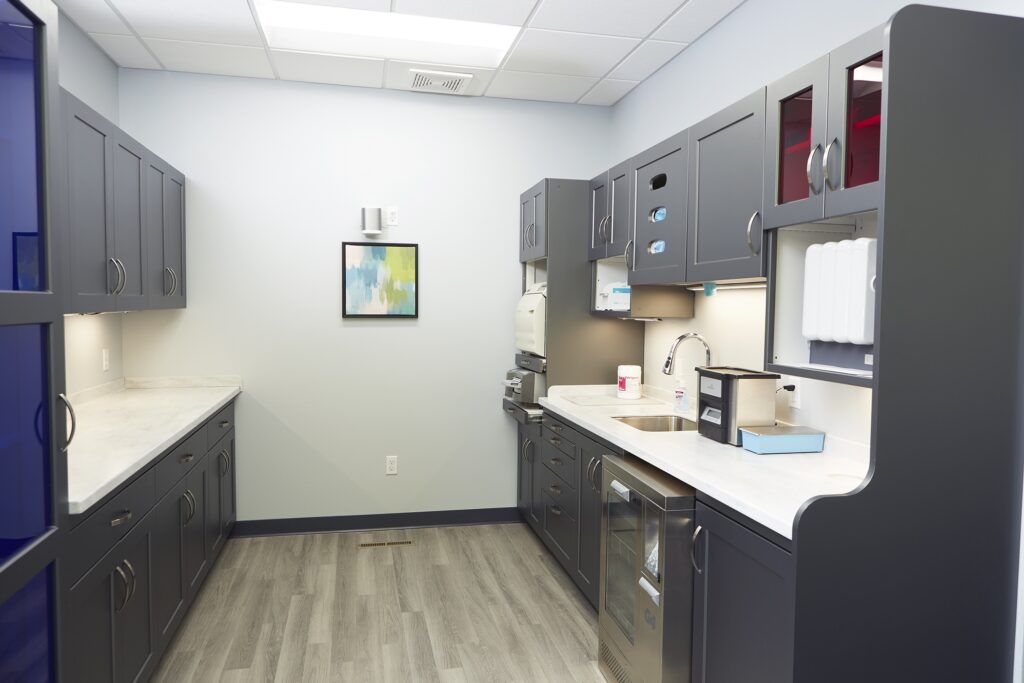Sterilization stands as the cornerstone of dental practice safety. A well-orchestrated sterilization center serves not only as a testament to a clinic’s commitment to patient health but also as a reflection of its dedication to upholding the highest standards of care. In an era where health and hygiene are paramount, understanding the essence and architecture of a state-of-the-art sterilization center becomes indispensable for every dental practitioner.
The Significance of Sterilization
In the realm of dentistry, the importance of sterilization cannot be overstated. Every instrument, from the simplest probe to the most intricate handpiece, has the potential to harbor harmful pathogens if not properly sterilized.
- Patient Safety:Effective sterilization eliminates the risk of cross-contamination, ensuring that patients are shielded from potential infections.
- Staff Safety:Dental staff are in constant contact with instruments. A rigorous sterilization process ensures their safety, reducing the risk of occupational exposure.
- Regulatory Compliance:Adhering to sterilization protocols isn’t just about best practices; it’s also about compliance. Regulatory bodies mandate stringent sterilization standards to ensure patient safety.
Designing the Optimal Sterilization Center
Crafting a perfect sterilization center goes beyond just having the right equipment. It encompasses layout, design, flow, and technology. Here are the key design elements to consider:
- Workflow Efficiency:The sterilization center should be designed with a clear workflow in mind – from receiving used instruments to cleaning, sterilizing, and storage.
- Accessibility:The center should be easily accessible from treatment rooms, ensuring quick and efficient instrument turnover.
- Adequate Space:Ample space is essential for housing sterilization equipment, ensuring instruments don’t come into contact with each other and for staff to move freely.
- Technology Integration:Modern sterilization centers leverage advanced technologies, such as autoclaves with data loggers, ensuring every sterilization cycle is monitored and recorded.
Technological Innovations in Sterilization
Sterilization technology has evolved considerably over the years. Today, there are numerous advanced tools and equipment designed to make the sterilization process more efficient and foolproof.
- Ultrasonic Cleaners:These use ultrasonic waves to remove debris and contaminants from instruments before sterilization.
- Class B Autoclaves:Considered the gold standard in sterilization, they ensure the highest level of sterilization, even for instruments with intricate lumens.
- Biological Indicators:These are used to test the efficacy of sterilization cycles, ensuring that all pathogens have been eradicated.
- Instrument Tracking Systems:With the aid of barcodes and scanners, these systems track each instrument through its cleaning and sterilization journey, ensuring traceability and accountability.
In the article, Designing a Sterilization Center in Dental Office, various design nuances and technological incorporations are discussed, showcasing the advancements in this vital aspect of dental care.
When it comes to setting up a sterilization center, collaborating with seasoned professionals, like the masterdent group, can provide invaluable insights into best practices and innovations.
Sterilization is a promise of trust and care that dental practitioners make to their patients. Crafting an impeccable sterilization center not only upholds this promise but also exemplifies a dental practice’s commitment to excellence in every facet of patient care.
You may also like
-
Bright Ideas, Low Bills: A Utah Homeowner’s Guide to Energy-Efficient & Safe Holiday Lighting
-
Your Dream Home Journey: A Step-by-Step Guide to Custom Building in Loganville, GA
-
The Silent Guardians: Singapore’s Tree Pruning Heroes Unveiled
-
Key Factors To Consider When Looking For A Reliable Pavement Contractor
-
Breathe Better for Less: Exclusive Deals on High-Performance Air Purifiers

